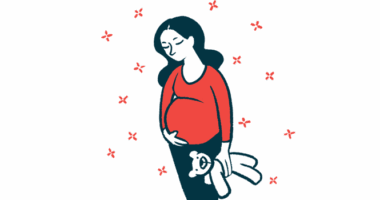Most Young HAE Children Attack-free After a Year on Takhzyro: Study

Most young children with hereditary angioedema (HAE) in the open-label Phase 3 SPRING study were free of swelling attacks following a year of treatment with Takhzyro (lanadelumab).
That’s according to new data recently shared at the European Academy of Allergy and Clinical Immunology (EAACI) Hybrid Congress 2022 in the presentation, “Efficacy and Safety of Lanadelumab in Pediatric Patients Aged 2 to <12 years With Hereditary Angioedema: Results From the Open-Label, Multicenter Phase 3 SPRING Study.”
“In the SPRING study, we saw a majority of children who had been suffering nearly two HAE attacks per month on average at baseline, who were then attack-free throughout the 52-week trial of treatment with Takhzyro,” Marcus Maurer, a professor at Universitätsmedizin Berlin, Germany, and principal investigator of the SPRING study, said in a press release.
Takeda, which markets Takhzyro, is planning to ask regulatory authorities to expand the therapy’s approval to treat children as young as 2. Takhzyro is approved to treat HAE patients ages 12 and older, at a dose of 300 mg, given every two weeks, via a subcutaneous (under-the-skin) injection.
The open-label SPRING study (NCT04070326) enrolled 21 children with HAE, ages 2 through 11. All but one of the children completed the year-long study; one young child was withdrawn by a parent.
All the children in SPRING were treated with Takhzyro, with dosing based on age: children ages 2 through 5 were given 150 mg every four weeks, while older children started at 150 mg every two weeks and then had the option to switch to treatment every four weeks if they were free of attacks. Of 17 children ages 6 through 11, seven switched to every four-week dosing after the first six months of treatment.
Going into the study, all the participants were experiencing regular swelling attacks, with a mean rate of nearly two attacks every month.
Over a year of treatment, 16 participants were completely free of swelling attacks. The overall rate of swelling attacks fell by 94.8% — from a mean of 1.84 attacks per month before the trial to 0.08 attacks per month during treatment. On average, patients remained attack-free 99.5% of the days, and the reduction in attacks was similar across all dose regimens.
Takhzyro was generally well tolerated in these young patients. One-third had side effects from the medication, all of which were related to injection (e.g., pain or redness at the injection site).
Overall, these data in young children “are consistent with the efficacy and safety profile of [Takhzyro] observed in earlier studies with adult and adolescent patients,” the researchers wrote.







